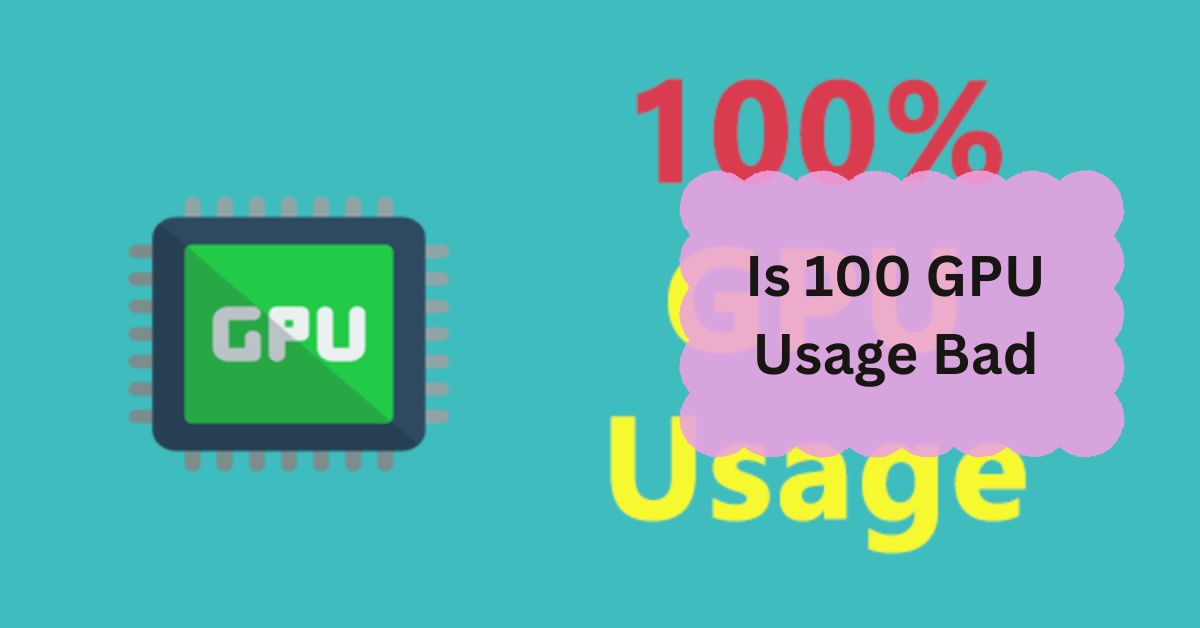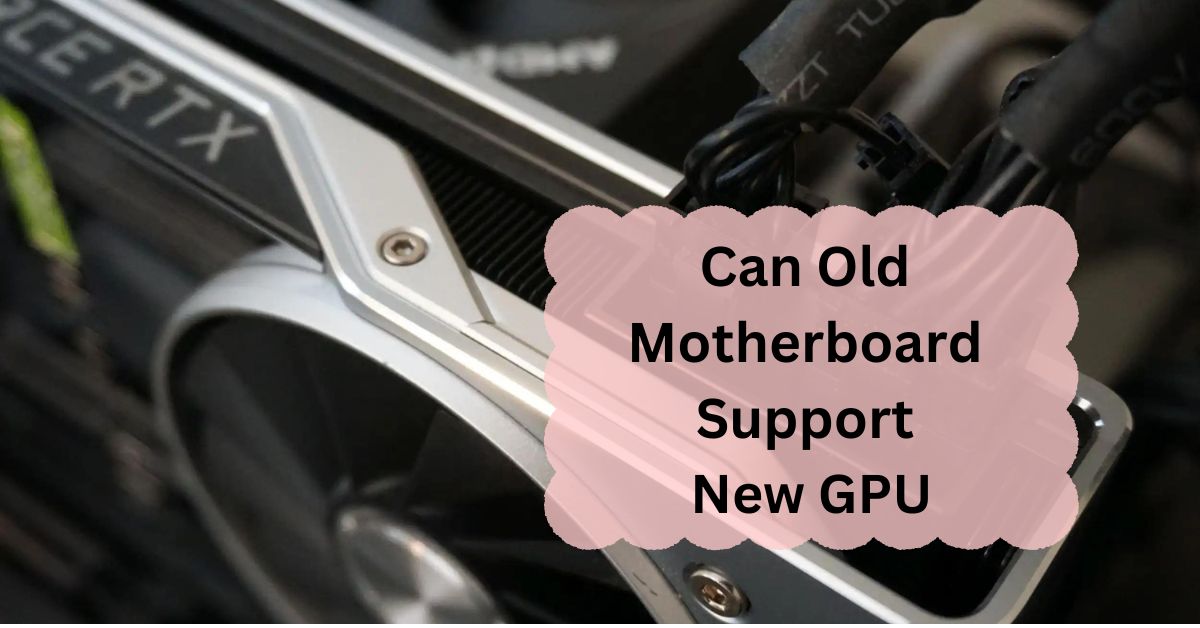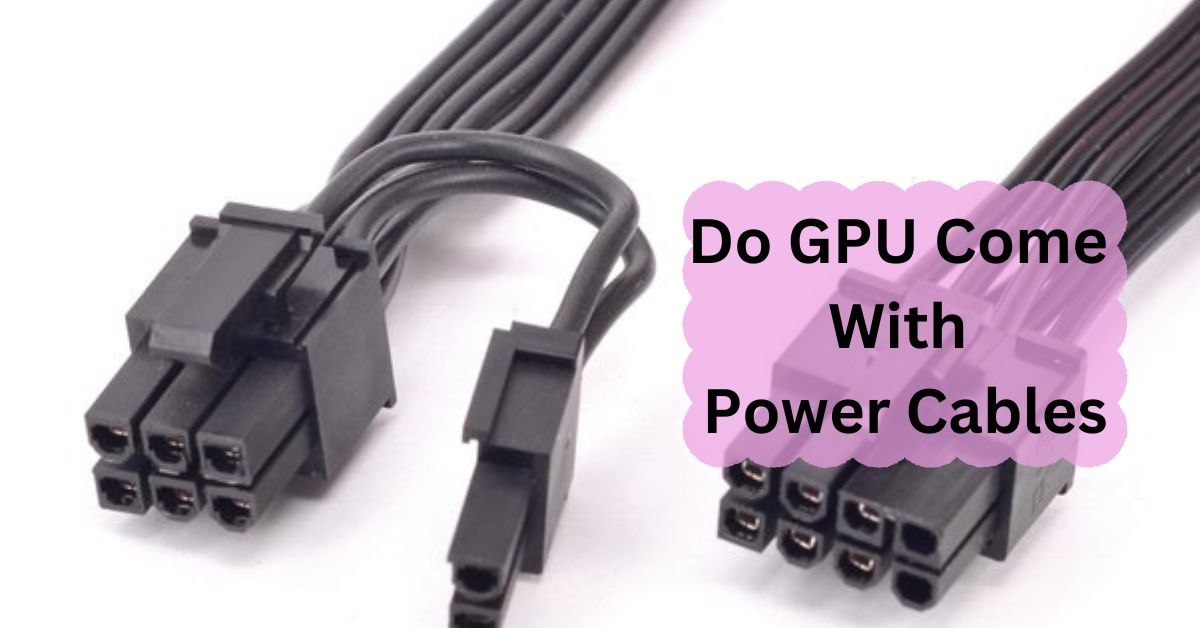In modern computing, a Graphics Processing Unit (GPU) is essential for rendering images, processing video, and even handling large amounts of data. But when you see your GPU running at 100%, it can raise concerns: is this usage harmful?
No, 100% GPU usage isn’t always bad; it means your GPU is working hard, like during gaming or video editing. This is normal as long as the temperature stays safe. If it overheats, though, it could cause problems. Always monitor temperatures to avoid damage.
In this article, we will discuss “Is 100 GPU Usage Bad”.
Table of Contents
Is 100% GPU Usage Bad?
GPU usage is a common concern for anyone who wants to maximize their gaming or work performance without damaging their hardware. This guide explains what 100% GPU usage means, why it happens, and whether it’s harmful to your graphics card.
What Does GPU Usage Mean?
GPU usage measures how much of your graphics processing unit (GPU) is currently being used to process tasks. It’s displayed as a percentage, with 0% meaning no GPU activity and 100% indicating the GPU is fully engaged in processing.
Understanding 100% GPU Usage:
When a GPU is running at 100%, it’s working at maximum capacity. This is common during high-demand tasks, like gaming, video rendering, or running intensive applications.
What Causes High GPU Usage?
High GPU usage happens when demanding software, such as modern games or graphical editing applications, requires substantial processing power. Other causes include unoptimized applications, malware, or multiple background tasks.
High GPU Usage in Gaming vs. Non-Gaming Scenarios:
For gamers, 100% GPU usage is often a good sign—it means the GPU is fully engaged in providing the best graphics performance possible. In non-gaming scenarios, like during idle time or light applications, high GPU usage might indicate a problem.
Is 100% GPU Usage Normal During Gaming?
Yes, running at 100% during gaming is typically expected. Games often push GPUs to their limits to achieve high frame rates and smooth visuals, so don’t be alarmed if your GPU hits full capacity while gaming.
Impact of 100% GPU Usage on Performance:
A GPU running at 100% may actually boost performance, as it’s utilizing all available resources to maintain speed and quality. However, in some cases, consistently high usage might lead to reduced performance if other parts of your system can’t keep up.
Is 100% GPU Usage Bad for Your Hardware?
GPU Temperature Concerns:
A GPU running at 100% will generate heat. As long as the temperature stays within safe limits (usually 70-85°C), it’s not harmful. Overheating, however, can be damaging, so monitoring temperature is crucial.
Effect on GPU Lifespan:
Consistent 100% usage doesn’t necessarily mean your GPU will wear out faster. Modern GPUs are designed to handle high loads, and as long as temperatures are controlled, the GPU should remain safe.
Common Misconceptions About GPU Usage:
Some believe that high GPU usage will automatically shorten a GPU’s lifespan or cause immediate damage. However, if temperatures are regulated and usage patterns are within the GPU’s intended capabilities, 100% usage isn’t inherently harmful.
Why Your GPU May be Running at 100%:
Demanding Applications and Processes:
Graphics-intensive programs like games, CAD software, and video editing tools are built to use maximum GPU resources.
Background Tasks and Software Updates:
Sometimes, background tasks, including system updates or applications running without your knowledge, can push GPU usage to the maximum.
How to Monitor GPU Usage:
Tools like MSI Afterburner, GPU-Z, or the Task Manager (in Windows) help monitor GPU usage. Observing usage trends can help you determine if high usage is expected or out of the ordinary.
Signs of Abnormal GPU Usage:
Unusual GPU spikes or prolonged 100% usage outside of intense tasks may indicate software issues or malware. Sluggish system performance or unexplained crashes can also point to abnormal GPU usage.
How to Lower GPU Usage:
Adjusting Graphics Settings:
Lowering in-game or software graphics settings can reduce GPU strain, lowering usage while preserving performance quality.
Updating GPU Drivers:
Outdated drivers can cause high GPU usage. Keeping drivers updated ensures optimal compatibility and performance.
Managing Background Tasks:
Close unnecessary applications running in the background to prevent them from consuming GPU resources.
When Should You Be Concerned About High GPU Usage?
While high usage is often normal, concern arises when you notice overheating, frequent crashes, or system instability. If 100% usage occurs without any demanding application open, there might be an underlying issue.
Benefits of Running GPU at Full Capacity:
Running at 100% allows the GPU to maximize graphics quality and system performance during heavy workloads. This can be beneficial for gamers and professionals working with visual media.
Pros and Cons of 100% GPU Usage:
Pros:
- Maximum graphics and performance quality
- Efficient GPU utilization for demanding tasks
Cons:
- Higher temperatures
- Potential for increased power consumption
Is 100% GPU usage harmful?
Yes, 100% GPU usage can be harmful if sustained for long periods. It can lead to overheating, thermal throttling, and reduced lifespan. Regularly monitoring temperatures and ensuring proper cooling is essential to avoid potential damage from excessive usage.
Is it normal for a GPU to be at 100%?
Yes, it is normal for a GPU to reach 100% usage during demanding tasks like gaming or rendering. However, if it stays at this level for extended periods without breaks, it may indicate an issue that requires attention.
How much GPU usage is too much?
Consistent GPU usage above 90% is often considered too much. While brief spikes to 100% during intensive tasks can be normal, prolonged usage at high levels can lead to overheating, performance issues, and potential damage over time.
Is 100 GPU usage good or bad?
100% GPU usage is not inherently bad during heavy tasks, but if it persists without breaks, it can lead to overheating and decreased performance. It is crucial to monitor temperatures and ensure adequate cooling to maintain GPU health.
Is 100 GPU usage bad Minecraft?
In Minecraft, reaching 100% GPU usage may occur with high settings or mods. While it may not be immediately harmful, prolonged usage can cause overheating. Adjusting graphics settings can help maintain performance and reduce stress on the GPU.
Is it safe to run a GPU at 100% for many hours?
Running a GPU at 100% for extended periods is generally unsafe. It can lead to overheating and potential damage. To protect your hardware, take regular breaks, monitor temperatures, and ensure your cooling system is working effectively.
When is 100% GPU Usage Normal?
100% GPU usage is normal during demanding applications like gaming, 3D rendering, or video editing. It indicates the GPU is working hard. However, it should not remain at this level for long periods without rest to avoid overheating.
When Could 100% GPU Usage Be a Concern?
100% GPU usage becomes a concern when it occurs frequently during light tasks or leads to overheating. If the GPU consistently runs at this level without demanding applications, it may indicate software issues or require better cooling solutions.
Why 100% GPU Usage Is Bad For Gaming?
100% GPU usage can negatively impact gaming by causing overheating, thermal throttling, and reduced performance. This may lead to lag or stuttering during gameplay. Monitoring temperatures and optimizing settings can help maintain smooth performance.
Is it normal for a GPU to run at 100% while gaming?
Yes, it’s normal for a GPU to reach 100% usage while gaming, especially in demanding titles. However, if it stays at this level for too long, it’s important to ensure proper cooling to prevent overheating and damage.
Is it safe to keep the GPU on 100% utilization for a very long time?
No, keeping the GPU at 100% utilization for extended periods is not safe. It can lead to overheating and hardware damage. Regular breaks, monitoring temperatures, and ensuring good airflow are essential to protect the GPU.
Can anyone tell me how much GPU usage is safe?
Keeping GPU usage below 85-90% is generally considered safe. If usage frequently hits 100%, it’s wise to investigate potential issues, adjust settings, or improve cooling to prevent overheating and maintain performance.
GPU usage 100% when playing?
It’s common for GPU usage to hit 100% while playing demanding games. This indicates the GPU is working hard to render graphics. Monitor temperatures and adjust settings if needed to prevent overheating and ensure stable performance.
GPU running at 100 degrees?
A GPU running at 100 degrees Celsius is extremely hot and dangerous. Such temperatures can cause permanent damage. Immediate action is needed to improve cooling, such as cleaning dust from fans, ensuring proper airflow, and checking thermal paste.
Why is my GPU usage so high when nothing is running?
High GPU usage without active tasks may be due to background applications, malware, or software glitches. Checking the task manager for running processes can help identify and resolve the issue, reducing unnecessary GPU load.
GPU 100% usage fix?
To fix 100% GPU usage, close unnecessary applications, update drivers, and adjust game settings. Additionally, ensure your GPU is properly cooled and monitor for malware, as these can contribute to excessive usage and overheating.
Why is my GPU at 100 utilization when idle?
If your GPU is at 100% utilization when idle, it could be caused by background processes, poorly optimized software, or a possible malware infection. Checking the task manager for active applications can help identify the cause.
GPU 100 usage low FPS?
If your GPU shows 100% usage but you experience low FPS, it might be struggling due to thermal throttling or a bottleneck elsewhere in your system. Check temperatures and ensure your CPU and RAM are not limiting performance.
Is 100% CPU usage bad?
100% CPU usage is not necessarily bad, but if it lasts for a long time, it can cause overheating and reduce performance. Regular spikes may be normal during heavy tasks, but sustained usage should be monitored to prevent damage.
FAQs:
Is 100% GPU usage safe for gaming?
Yes, many games push the GPU to 100% for better performance, and this is generally safe.
How long can a GPU run at 100% usage?
A GPU can run at full usage for extended periods, as long as it’s kept cool to avoid overheating.
Does high GPU usage drain more power?
Yes, higher GPU usage will increase power consumption, leading to higher energy costs.
Can I use my computer normally with 100% GPU usage?
Yes, but other applications may experience slowdowns if the GPU is fully engaged with a task.
Is 100% GPU usage necessary for VR?
For high-quality VR experiences, 100% usage may be required to handle demanding visuals smoothly.
Is 100% GPU usage dangerous for my PC?
No, it’s safe if temperatures are under control. Modern GPUs are built to handle full usage for extended periods.
What should my GPU usage be during gaming?
100% usage is normal for gaming. It means your GPU is working at full capacity to provide the best performance.
Can 100% GPU usage cause crashes?
Only if your GPU overheats or there’s a system issue. Proper cooling and monitoring can prevent crashes.
How can I reduce high GPU usage?
Lowering graphics settings, updating drivers, and closing background applications can help reduce GPU usage.
Does high GPU usage affect performance?
High GPU usage usually enhances performance. However, if other components lag, it may impact overall system performance.
Conclusion:
In conclusion, 100% GPU usage is often normal during demanding tasks like gaming and video editing. However, it’s important to monitor temperatures to prevent overheating. As long as the GPU stays cool, high usage can enhance performance. If usage remains high without heavy tasks, check for issues and consider optimizing settings to protect your hardware.


